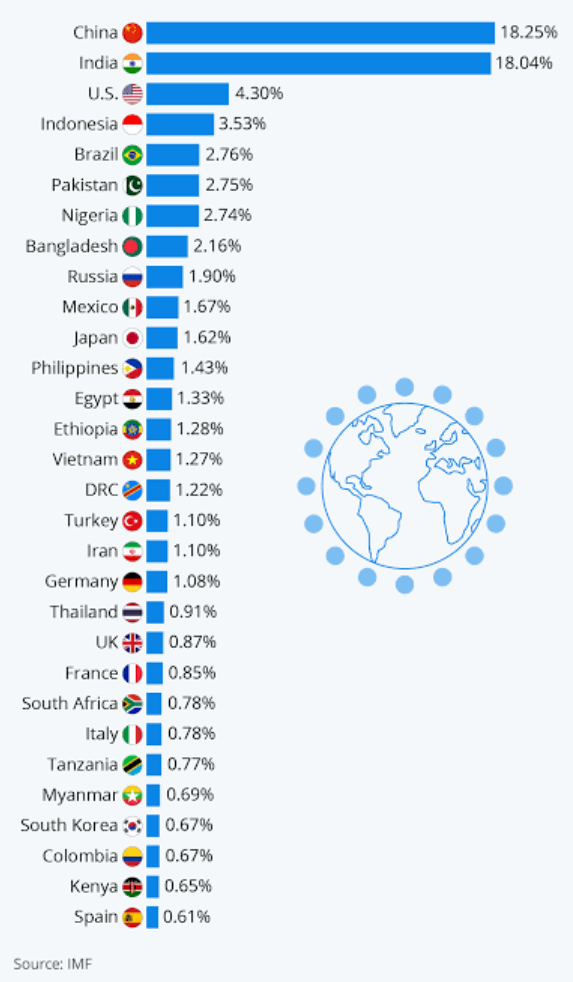In demographics, the term world population is often used to refer to the total number of humans currently living, and was estimated to have exceeded 7.9 billion as of November 2021.[3] It took over two million years of human prehistory and history for the human population to reach one billion and only 207 years more to grow to 7 billion.[4]
The human population has experienced continuous growth following the Great Famine of 1315–1317 and the end of the Black Death in 1350, when it was near 370,000,000.[5] The highest global population growth rates, with increases of over 1.8% per year, occurred between 1955 and 1975 – peaking at 2.1% between 1965 and 1970.[6] The growth rate declined to 1.1% between 2015 and 2020 and is projected to decline further in the course of the 21st century.[7][8] The global population is still increasing, but there is significant uncertainty about its long-term trajectory due to changing rates of fertility and mortality.[9] The UN Department of Economics and Social Affairs projects between 9 and 10 billion people by 2050, and gives an 80% confidence interval of 10–12 billion by the end of the 21st century,[2] with a growth rate by then of zero.[8] Other demographers predict that the human population will begin to decline in the second half of the 21st century.[10]
The total number of births globally is currently (2015-20) 140 million/year, is projected to peak during the period 2040-45 at 141 million/year and thereafter decline slowly to 126 million/year by 2100.[11] The total number of deaths is currently 57 million/year and is projected to grow steadily to 121 million/year by 2100.[12]
The median age of human beings as of 2020 is 31 years.[13]
